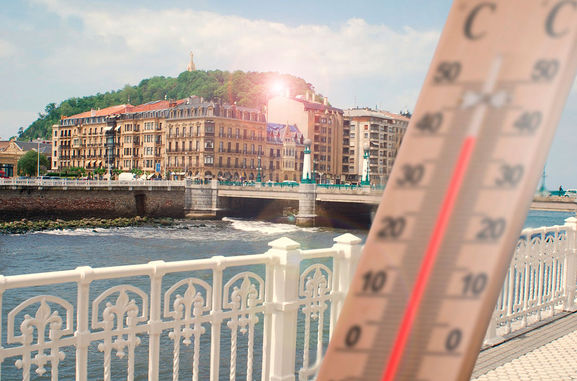These nature-based solutions are our allies when mitigating its effects
A study conducted by TECNALIA, linked to the Adaptation to Climate Change Plan of March 2017, approved by San Sebastian City Council, analyses the impact of climate change in the city.
Enrique Ramos, Ecology Councillor, pointed out that “the temperature on our city has been analysed. In fact, the diagnosis of the Plan itself has already shown that one of the four impacts of climate change in San Sebastian could be the so-called heat waves”.
The study was based on the creation of a thermal map. It was developed using Urbclim, the meso-scale urban climate model, based on cartographic and meteorological information. The results were then validated using data from meteorological stations in the city of San Sebastian. Once the validation process was completed, various thermal ratings were developed and mapped: duration of the heat waves, frequency, intensity, maximum night-time temperatures, etc.
For the year 2100, the diagnosis forecasts are as follows:
- A rise in maximum temperature of around 2.8 ºC; an increase of between five and fifteen nights per year at temperatures above 20 ºC.
- An increase of between two and four more heat waves per year by the end of the century. Higher maximum daytime and minimum night-time temperatures will have a direct effect on health.
- The average sea surface temperature has increased 0.19 ºC per decade during the period from 1980 to 2015.
The thermal map of the city also shows that neighbourhoods away from the coast record much higher temperatures.
The nature-based systems are important allies that enable us to ease the impact of temperature increase and heat waves, such as green roofs, patios with vegetation...
As part of the UrbanKlima initiative, we are preparing a catalogue of nature-based solutions. Some of these have already been adopted by many cities like Paris or Copenhagen, where there is a green roof strategy which states that new buildings with flat roofs (with a slope of less than 30º) must be green from 2020.

